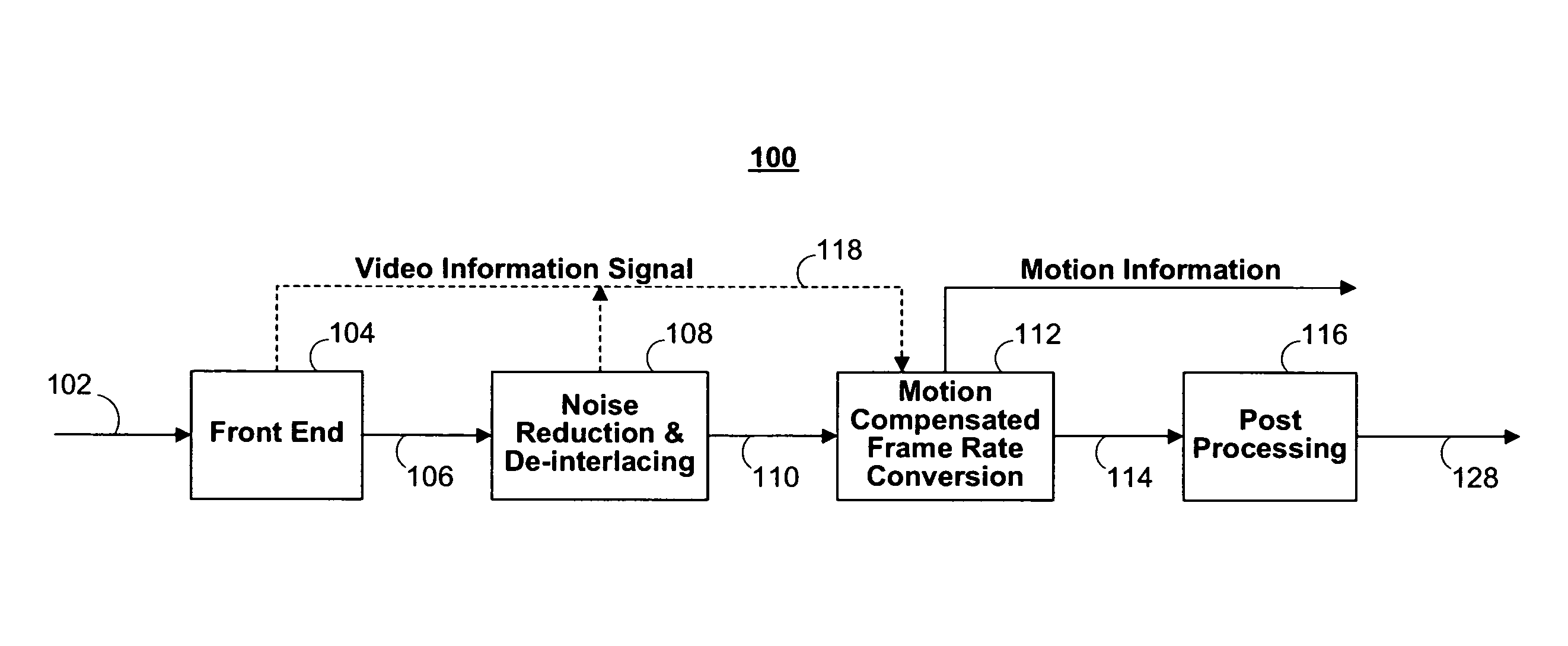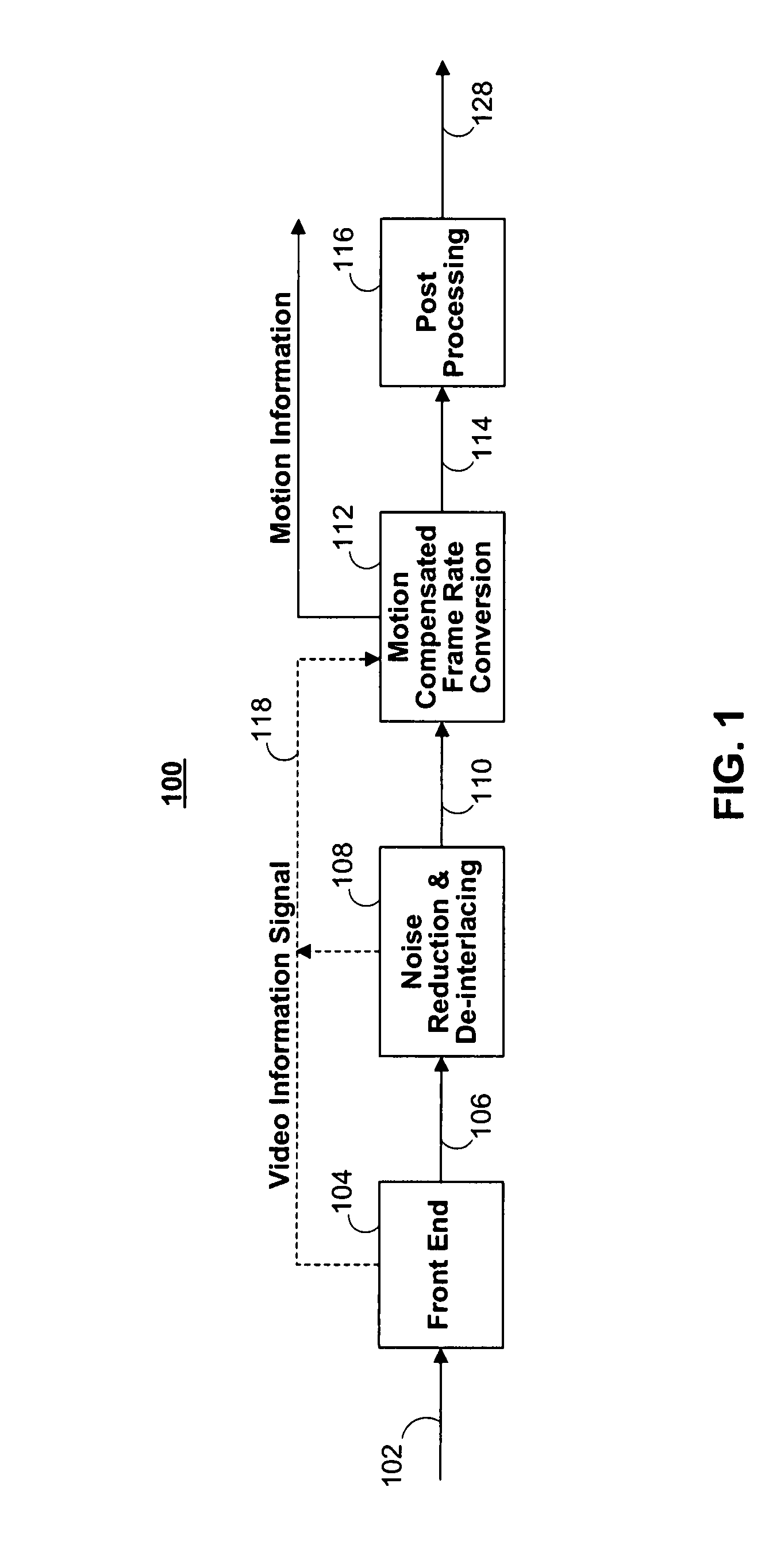Systems and methods for a motion compensated picture rate converter
a technology of motion compensation and rate converter, which is applied in the field of system and method of motion compensation picture rate converter, can solve problems such as blunders and juddering when motion occurs
- Summary
- Abstract
- Description
- Claims
- Application Information
AI Technical Summary
Benefits of technology
Problems solved by technology
Method used
Image
Examples
Embodiment Construction
[0043]FIG. 1 illustrates a high-level diagram of a motion compensated picture rate converter (MCPRC) circuit 100 in accordance with one aspect of the invention. Input signal 102, having a discrete sequence of video frames, is input to MCPRC circuit 100, which produces an up-converted, motion-compensated output signal 128 via modules 104, 108, 112, and 116 of MCPRC circuit 100. Each of the modules of MCPRC circuit 100 will be described below. Subsequent to the up-conversion, output signal 128 from MCPRC circuit 100 has a frame rate that is typically much higher than the frame rate of input signal 102. For example, input video signal 102 may be produced from a video camera which has a picture rate of 60 Hz. This video signal may need to be up-converted using MCPRC circuit 100 in order to be suitable for output on a LCD panel display having, for example, a refresh rate of 120 Hz. In general, frame rate up-conversion is achieved by injecting a pre-determined number of unique frames betw...
PUM
 Login to View More
Login to View More Abstract
Description
Claims
Application Information
 Login to View More
Login to View More - R&D
- Intellectual Property
- Life Sciences
- Materials
- Tech Scout
- Unparalleled Data Quality
- Higher Quality Content
- 60% Fewer Hallucinations
Browse by: Latest US Patents, China's latest patents, Technical Efficacy Thesaurus, Application Domain, Technology Topic, Popular Technical Reports.
© 2025 PatSnap. All rights reserved.Legal|Privacy policy|Modern Slavery Act Transparency Statement|Sitemap|About US| Contact US: help@patsnap.com



